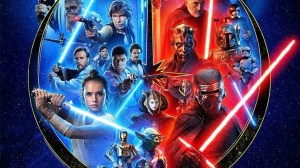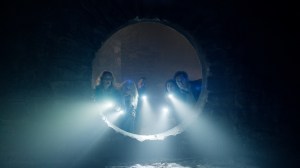By the end of “Crisis on Infinite Earths,” the five-part mega-crossover that featured characters from Arrow, The Flash, Supergirl, DC’s Legends of Tomorrow, Batwoman, and Black Lightning all spending time together in a war on the Anti-Montior, the multiverse had been eradicated completely before being reborn as a single universe…and then reborn again. That last part, though? Well, the heroes of Earth Prime still don’t know about that, according to “Crisis” showrunner Marc Guggenheim.
Videos by ComicBook.com
That means that, basically, the doors have been closed to other worlds in the DC multiverse…but those doors aren’t locked, exactly. It also provides a reasonable setup for the heroes of Earth Prime to accept what has happened — that Earth-38 and the world that Black Lightning took place on are gone, whereas if they knew there was still a multiverse, the heroes of those Earths might try to “fix” things.
You can check Guggenheim’s tweet about the question out below.
The Earth Prime heroes don’t know there’s still a multiverse. Shh. Don’t tell em. https://t.co/c5AfXEZzag
— Marc Guggenheim (@mguggenheim) January 20, 2020
In DC Comics, Crisis on Infinite Earths eliminated the DC multiverse and created a single, merged timeline that included characters from various different worlds. No one on the merged world — later called “New Earth” — even remembered the events of the Crisis except for Psycho-Pirate, who ranted about it from inside of Arkham Asylum. After the events of Crisis, non-continuity stories would still be told — but they would be labeled “Elseworlds” and those stories would never interact with the main DC continuity. This status quo held for 20 years, until Infinite Crisis reintroduced pre-Crisis characters and concepts, and ended with a limited (52-Earth) multiverse in place.
Later, several of the “Elseworlds” Earths, as well as characters from the pre-Crisis on Infinite Earths multiverse, would play a role in Convergence, a crossover event that pitted heroes from different realities against one another and, in the end, re-established an infinite multiverse. That story, though, was not as popular as they had hoped and there have since been more attempts to do the same, most recently in Doomsday Clock.
There is no telling when, or if, the multiverse will be revealed (again) to the heroes of the Arrowverse, but as long as it is hidden, it explains why they would not go to, say, the Kingdom Come Earth or the home of the DC Universe Titans for help in a pinch. It also keeps Oliver Queen’s death more meaningful, as nobody feels like they can just jump on the Waverider or the Cosmic Treadmill and hang out with him again.
The Crisis brought together heroes from various eras of DC’s TV and film adaptations, including Brandon Routh’s Superman (originally seen in Superman Returns), Burt Ward’s Dick Grayson (originally seen in the 1966 Batman series), Tom Welling’s Clark Kent (originally seen in Smallville), Tom Ellis’s Lucifer Morningstar (currently appearing in Lucifer), and Ezra Miller’s version of The Flash, who first appeared in Batman v Superman: Dawn of Justice and has his own solo movie coming up from the director of IT.
Fans can get caught up by watching all five parts of the “Crisis on Infinite Earths” crossover on The CW‘s website or app now, or buying them through video on demand platforms. The post-“Crisis” Arrowverse began this weekend with new episodes of Batwoman and Supergirl before launching into new Arrow and Black Lightning today and tomorrow.








